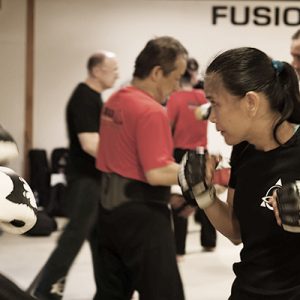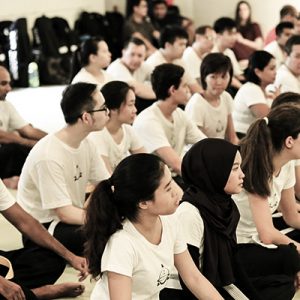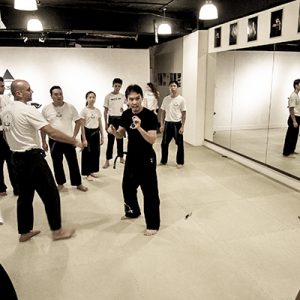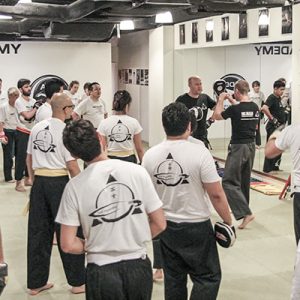
Jul 01 2021
kalimajapahit
What systems are included in Kali Majapahit?
- KADENA DE MANO (Empty-hands / Self-defense) is a very efficient sub-system for CQC (Close Quarter Combat), and teaches how to flow from one movement to another, using punches, palm strikes, elbows, knees, head-butts, takedowns, etc. Kadena de Mano was founded by Filipino Master Max Sarmiento; it means “chain of the hands”.
- STICK-FIGHTING (Single and Double Sticks) is great way to improve coordination, and one of the core sub-systems of Filipino Martial Arts. Using 1 or 2 sticks, at different distances, Filipino stick arts come from traditional fencing. Our double sticks system (doble baston) is called Sinawali ; Our single stick system (solo baston) is called Dequerdas (for Beginners) and Serrada (for Advanced). They all come from Inayan Eskrima.
- DAGA (Knife) Learnt for knife defense as well as cultural and historical purposes, knife training develops precision and speed in one’s martial practice. “Blade work” is a specialty of Filipino Martial Arts.
- PANUNTUKAN (Kickboxing) and DUMOG (Wrestling / Grappling) Often called “Filipino boxing”, “dirty boxing” or “street boxing”, Panuntukan is also an amazing workout and provides a great boost to self-confidence. Dumog completes Panuntukan with throws, take-downs and grappling; they both have similarities with Muay Thai and MMA.
- TRANKADA (Joint Locks and Pressure Points) is a very deep and advanced sub-system, using locks and counter-locks to control an opponent or reverse a dangerous situation. It has similarities with ju-jitsu and Chin-na.
- LARGO MANO (Long Range Combat) derives from the long Filipino Kampilan sword and is the long range sub-system of FMA. Kali Majapahit uses the Inayan Largo Mano system. • ESPADA Y DAGA (Sword + Knife) is an advanced concept in FMA and brings stick (or sword) and knife training together, pushing the practitioner to become ambidextrous.
- SIBAT / BANGKOW (Spear / Long Staff) teaches students to manipulate longer weapons than the ones they are used to. The bangkow staff is approximately 150cm long and its use has similarities with “Northern Shaolin” long staff.
- PENCAK SILAT is a fighting art from the Malay peninsula (Indonesia / Malaysia / Singapore). It is a very efficient martial art, using empty hands, weapons, sarong, etc. We also find Silat in Southern Philippines, especially in Mindanao.
- KUNTAO is a generic name for the Kung Fu styles of the Chinese Hakka people in Southeast Asia. The Hakka have migrated in mass, bringing their fighting arts to Indonesia, Malaysia, Singapore, Philippines, Thailand, etc. Among famous Hakka styles are : Wing Chun, Pak Mei, Southern Praying Mantis, Phoenix Eye Fist… Hakka Kuntao has influenced Silat, Muay Thai, Filipino Kuntaw, JKD, etc.
- JEET KUNE DO Bruce Lee’s Jeet Kune Do and its philosophy had a tremendous impact on Kali Majapahit. In the 60s Bruce Lee’s martial art evolved from what he called Jun Fan Kung Fu (his own interpretation of Wing Chun) to Jeet Kune Do (the Way of the Intercepting Fist). JKD has influences from Wing Chun of course, but also Filipino Kali, French Savate, Fencing, Western boxing, Southern Praying Mantis, Taiji Quan… Guro Fred had the honor to train in JKD with PG Jeff Espinous, Guro Bob Breen, and Sifu Richard Bustillo (one of Bruce Lees’s first student).
- HEALTH & WELLNESS Our H&W program is composed of dietetic and nutrition, posture correction, breathing, psychology and stress management, functional conditioning and meditation.
Come & Experience It Yourself.

Get In Touch
How can we help to get you started?






